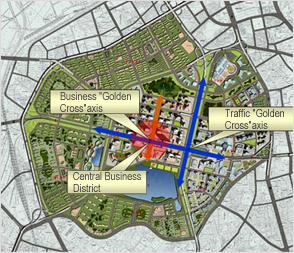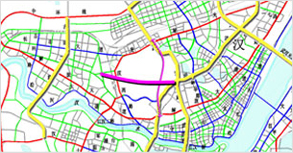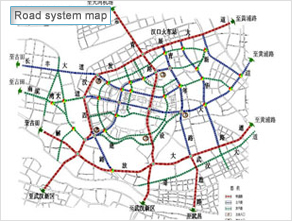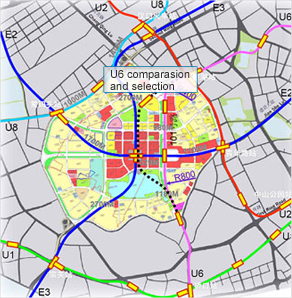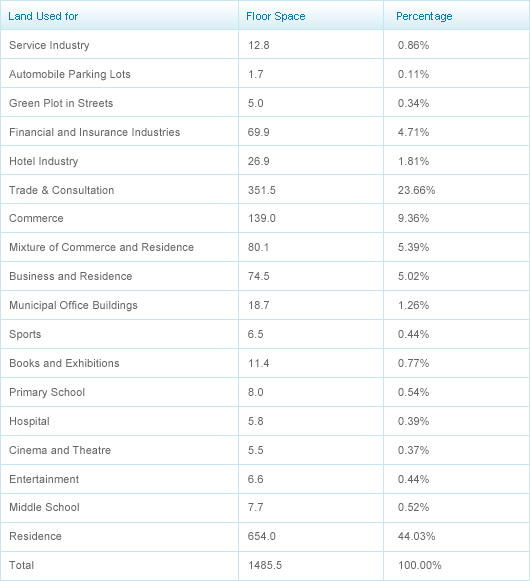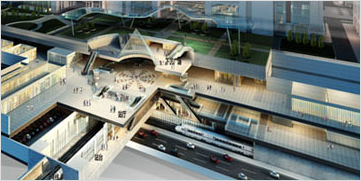- Home
- About us Company Profile | Shareholders | Organizational Structure | Management Groups | Corporate Culture
- About CBD Project Background | Orientation | Access and Facilities | Planning History | Planning Achievements
- Projects Wuhan Center | Oceanwide City Square | Oceanwide International Residential District | Oceanwide International SOHO Town
- Client center Management Ethos
- Property Service Company Profile | Professional Service
- Investment Platform Projects | Project Advantages
quick link
Contact us
Planning Achievements
Goals
With the purpose of turning Wuhan CBD into an internationally famous and nationally first-class modern service industry center, the company takes the advantage of its favorable location featuring “gathering” and “radiation” functions, and develops under the overall strategy of realizing the great-leap-forward development and modernization of Wuhan city, so as to forge itself into a financial and insurance center which basing in central and serving China, as well as a business district clustered with enterprises’ regional headquarters and serving Wuhan’s modern manufacturing industry.
Structure
Wangjiadun area has been planned as “One Center, Two Axes and Four Function Parts”. “One Center” refers to the CBD center of 1.0km2. “Two Axes” refers to the transportation golden cross and business golden cross. They are same in structure but different in locations, which reflect the prosperity and high efficiency of the modern CBD.
Sectorization
1. CBD
It mainly includes functions like business offices, together with commerce, culture, entertainment, high and middle class hotels and apartments.
2. Comprehensive Business District
The Comprehensive Business District is located in the northeast of the CBD, adjacent to Changqing Road, between the CBD and the Jianshe Avenue, which mainly covers business buildings, apartments and several office buildings by combing the functions of the main business streets, the CBD and the old areas.
3. Service Area
It’s located in the northeast of the CBD, adjacent to Changqing Road and Qingnian Road. It mainly aims at serving citizens for new businesses, such as leisure, shopping and commercial recreations, together with the functions for high-level hotel and conferences.
4. Residential Areas
It is planned to accommodate 200,000 residents. Providing sports and entertainment to the community residents and the surrounding business centers, a modern sports center is to be built in this area with an area of 13.4 hectares.
Road Network System
It is planned in accordance with the city’s texture, which leads to a good connection with the traffic flows parallel and vertical to the Yangtze River.
In order to make the transportation system in Wangjiadun area convenient, fast and reliable, the area is to be connected with existing road system in the way of complete interchanges. To form a multilayer complex road network system underground, on the ground and over-ground, it is also planned to connect the high-rise buildings, underground stations, the business space both underground and over-ground as well as the parking garages (including the underground garages) so as to build the all-weather comprehensive city space.
Railway Transportation
According to the rail traffic network plan of Wuhan city, there are five rail traffic lines (Number 2, 3, 7, 8 and 10) across or through Wangjiadun area.
Utility of Underground Space
Learning from foreign CBD construction experiences, it is planned to build an underground comprehensive business space in the CBD center. The underground business space will link up with subway stations where there will be underground malls, catering, entertainment and parking facilities, making itself a super large comprehensive space with complete functions and first-class facilities.
Landscape Planning
There will be a 15-hectare public green space in the south of the CBD, inclusive of a 2-hectare water square for visitors’ entertainment. Meanwhile, it also planned to construct theme parks featured with business, culture entertainment, performance centers, sports and wet land experience, etc. By making use of the building residues, it plans to mound a massif of 12 hectares in the north of Wangjiadun, which will turn itself into a natural environment with a typical city image of “southern mountains and northern water”.
Planning of Underground Space
The company together with Wuhan Urban Planning and Design Institute started Wuhan CBD underground space planning at the same time when the planning of Wuhan CBD of 7.41km2 was conducted. The underground space planning was officially approved by the municipal government in June 2008, which confirmed the gross land area of 2.621 million km2 for underground space development of the CBD. In addition, the underground space was divided into nine branches and therefore was constructed at three levels, namely, core areas, key areas and general areas.
The company together with Wuhan Urban Planning and Design Institute started Wuhan CBD underground space planning at the same time when the planning of Wuhan CBD of 7.41km2 was conducted. The underground space planning was officially approved by the municipal government in June 2008, which confirmed the gross land area of 2.621 million km2 for underground space development of the CBD. In addition, the underground space was divided into nine branches and therefore was constructed at three levels, namely, core areas, key areas and general areas.
